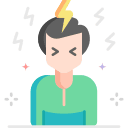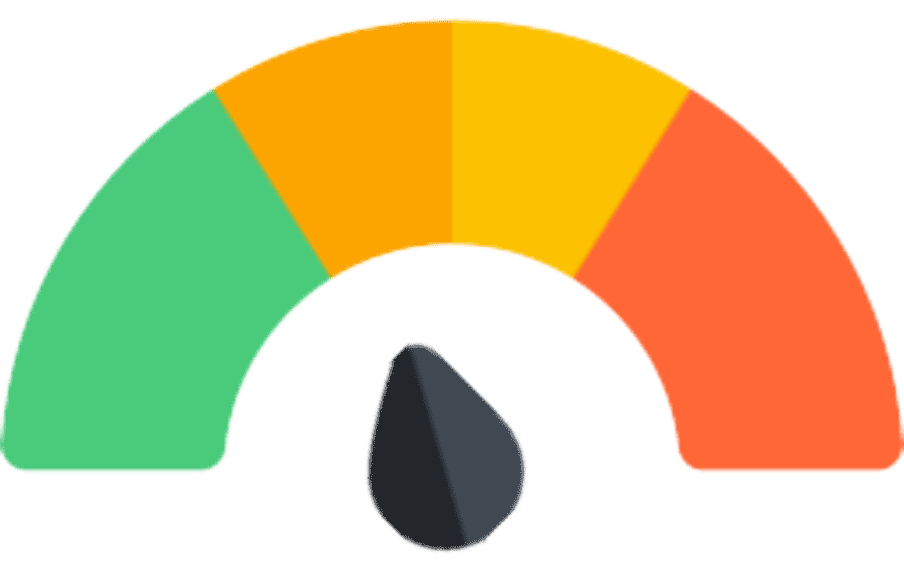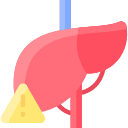(Bold for FDA approved)
 How Prolinate works
How Prolinate works• Blocks dopamine 2 receptors, reducing positive symptoms of psychosis
• Psychotic symptoms can improve within 1 week, but it may take several weeks for full effect on behavior
 Notable Side Effects
Notable Side Effects• Neuroleptic-induced deficit syndrome
• Akathisia
• Priapism
• Drug-induced parkinsonism
• Tardive dyskinesia, tardive dystonia
• Risk of potentially irreversible involuntary dyskinetic movements may increase with cumulative dose and treatment duration
• Galactorrhea, amenorrhea
• Dizziness, sedation
• Dry mouth, constipation, urinary retention, blurred vision
• Decreased sweating, depression
• Sexual dysfunction
• Hypotension, tachycardia, syncope
• Weight gain
 Life Threatening Side Effects
Life Threatening Side Effects• Rare neuroleptic malignant syndrome may cause hyperpyrexia, muscle rigidity, delirium, and autonomic instability with elevated creatine phosphokinase, myoglobinuria (rhabdomyolysis), and acute renal failure
• Rare jaundice, agranulocytosis
• Rare seizures
• As a class, antipsychotics are associated with an increased risk of death and cerebrovascular events in elderly patients with dementia; not approved for treatment of dementia-related psychosis

not usual

not usual
• Wait
• Wait
• Wait
• For drug-induced parkinsonism, add an anticholinergic agent
• Beta blockers, benzodiazepines, or serotonin 2A antagonists (e.g., mirtazapine, cyproheptadine) may reduce akathisia
• Reduce the dose
• For sedation, take at night
• Switch to an atypical antipsychotic
• Weight loss, exercise programs, and medical management for high BMIs, diabetes, dyslipidemia
• Metformin may help prevent or reverse antipsychotic-induced weight gaiN
• Oral: 1–20 mg/day maintenance
• Intramuscular: generally 1/3 to 1/2 the oral dose
• Decanoate for intramuscular or subcutaneous administration: 12.5– 100 mg/2 weeks maintenance (see Fluphenazine Decanoate section after Pearls for dosing and use)
 Dosage Forms
Dosage Forms• Tablet 1 mg, 2.5 mg scored, 5 mg scored, 10 mg scored
• Decanoate for long-acting intramuscular or subcutaneous administration 25 mg/mL
• Injection for acute intramuscular administration 2.5 mg/mL
• Elixir 2.5 mg/5 mL
• Concentrate 5 mg/mL
• Should periodically reevaluate long-term usefulness in individual patients, but treatment may need to continue for many years
• No
 Renal Impairment
Renal Impairment• Use with caution; titration should be slower
 Hepatic Impairment
Hepatic Impairment• Use with caution; titration should be slower
 Cardiac Impairment
Cardiac Impairment• Cardiovascular toxicity can occur, especially orthostatic hypotension
 Elderly
Elderly• Titration should be slower; lower initial dose (1–2.5 mg/day)
• Elderly patients may be more susceptible to adverse effects
• Although conventional antipsychotics are commonly used for behavioral disturbances in dementia, no agent has been approved for treatment of elderly patients with behavioral symptoms of dementia such as agitation
• Elderly patients with dementia-related psychosis treated with antipsychotics are at an increased risk of death compared to placebo, and also have an increased risk of cerebrovascular events
 Children and Adolescents
Children and Adolescents• Safety and efficacy not established
• Decanoate and enanthate injectable formulations are contraindicated in children under age 12
• Generally consider second-line after atypical antipsychotics
 Pregnancy
Pregnancy• Effective June 30, 2015, the FDA requires changes to the content and format of pregnancy and lactation information in prescription drug labels, including the elimination of the pregnancy letter categories; the Pregnancy and Lactation Labeling Rule (PLLR or final rule) applies only to prescription drugs and will be phased in gradually for drugs approved on or after June 30, 2001
• There is a risk of abnormal muscle movements and withdrawal symptoms in newborns whose mothers took an antipsychotic during the third trimester; symptoms may include agitation, abnormally increased or decreased muscle tone, tremor, sleepiness, severe difficulty breathing, and difficulty feeding
• Reports of drug-induced parkinsonism, jaundice, hyperreflexia, hyporeflexia in infants whose mothers took a phenothiazine during pregnancy
• Fluphenazine should only be used during pregnancy if clearly indicated
• Psychotic symptoms may worsen during pregnancy and some form of treatment may be necessary
• Atypical antipsychotics may be preferable to conventional antipsychotics or anticonvulsant mood stabilizers if treatment is required during pregnancy
 Breast Feeding
Breast Feeding• Some drug is found in mother’s breast milk
• Effects on infant have been observed (dystonia, tardive dyskinesia, sedation)
• Recommended either to discontinue drug or bottle feed
Based on data Published online by Cambridge University Press
Compiled by Dr. Jash Ajmera